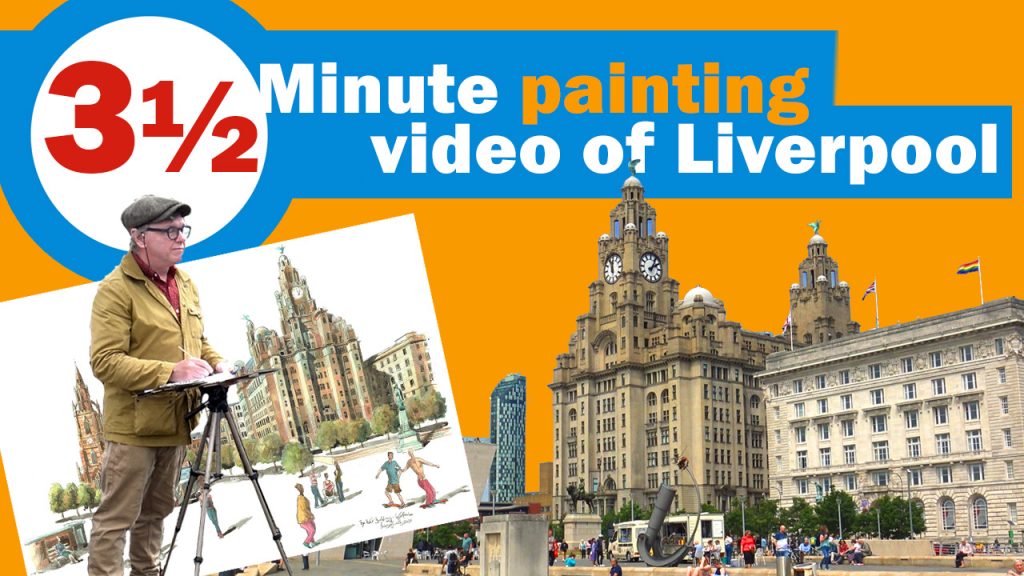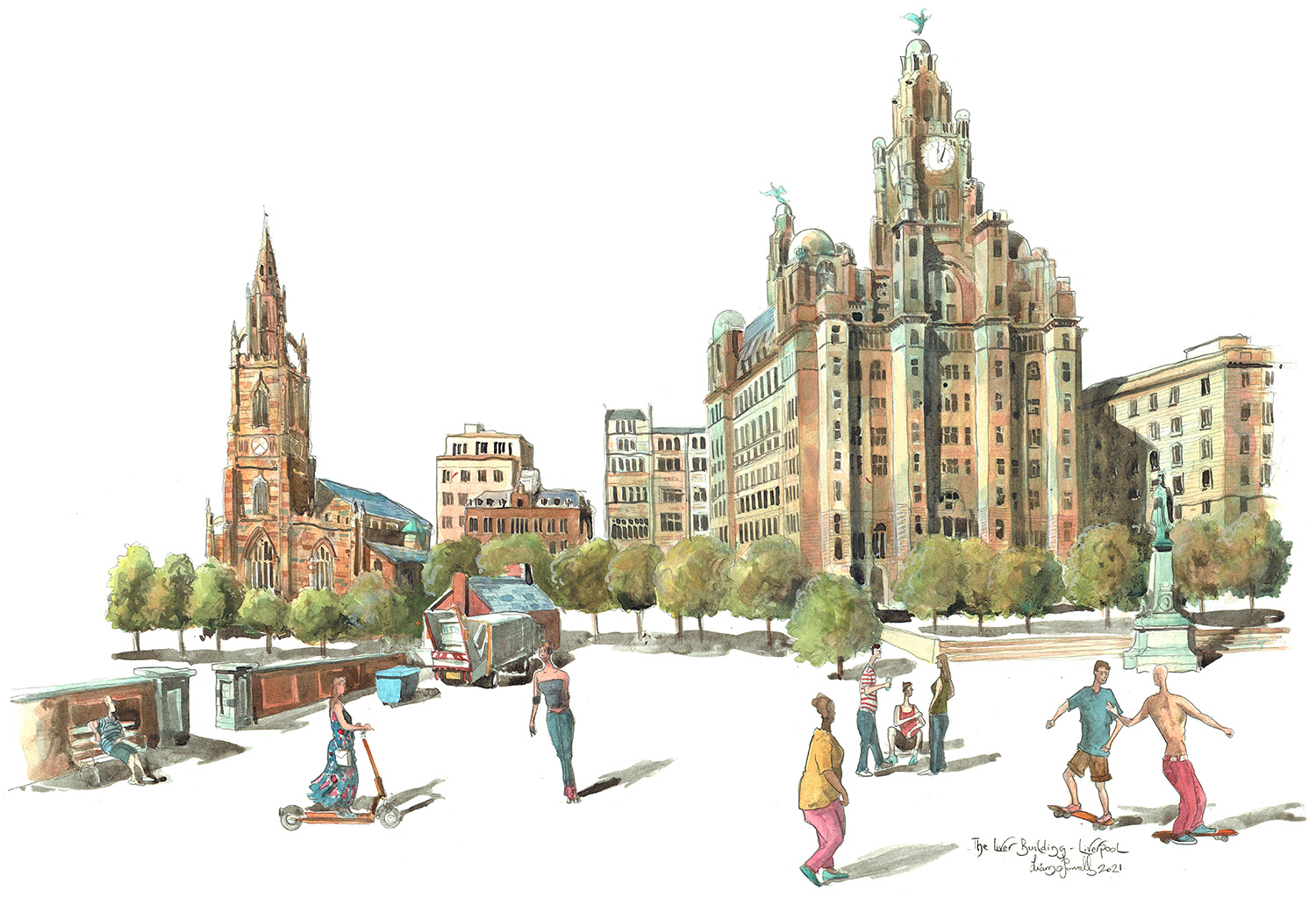Earlier this year, after visiting a client, I took the opportunity to visit Liverpool and do a spot of painting. While there, I thought I would produce a small video of my experiences. I hope you enjoy it.
You can buy a limited edition print of the painting here
The City of Liverpool dates back to 1207 in the reign of King John and things must have moved pretty fast as in 1235 they built a castle. It’s long gone now but stood on the site of the Victoria monument which I’ve included in my painting.
The port of Liverpool’s greatest growth period really began in the 18th century with the building of modern docks that could service transatlantic trading. During the 19th century things really took off due to the growth of the British empire. This culminated with the building of The Albert Dock in 1846.
The Royal Liver Building
Along the way a several notable buildings were constructed including The Royal Liver Building which is the large building in the centre of the painting.
It was one of the fist buildings in the world built using reinforced concrete. It was opened in 1911 and was the headquarters of the Royal Liver Assurance Group, this being an organisation set up in 1850 to provide local people with assistance, should they lose a wage earning relative.
The Cunard Building
This was opened in 1917 and is a combination of Italian Renaissance with a bit of Greek Revival thrown in for good measure. This features to the far right of my painting.
Up until the 1960s this was the headquarters of the Cunard Line which owned and ran the cruise ships, The Queen Elizabeth, Queen Elizabeth 2 and the ill fated Atlantic Conveyor which was sunk by an Exocet missile during The Falkland Conflict in 1982.
Today The Cunard Building still maintains its original name though is owned by Liverpool City Council and houses many public and private sector organisations including The British Music Experience.
The Church of Our Lady and Saint Nicholas
In 1257, a small stone chapel known as St Mary del Quay had been built by order of King John. In 1355 The Chapel of St Nicholas (Patron Saint of Sailors) was built on the site.
It was a fairly small church at that time, although as Liverpool grew, so did the church with the spire added in 1747.
Sadly in 1940, the church was hit by incendiary bombs and, aside form a few out-buildings and the tower, was more or less destroyed. Much of what we see today was built in the 1950s. You can see ‘St Nicks’ at the far left of my painting.
Albion House
This was opened in 1898 and was the headquarters of Ismay, Imrie and Company shipping company.
This later became the infamous White Star Line which owned and operated the RMS Titanic which struck an iceberg in 1912 and sank a few hours later with a loss of over 1,500 lives.
The chairman and managing director Joseph Bruce Ismay was aboard the Titanic during the sinking and was much criticised for surviving the disaster when so may women and children did not. In the press he was labelled “The Coward of the Titanic”.
The company too came under tough criticism and White Star officials were too afraid to leave the building, so shouted the names of the deceased from a balcony. Not a good look.
Just over a year later Ismay resigned, a broken man.
Today the building serves as a hotel known as ‘30 James Street’ and is where I stayed during my visit although Albion House Is not in my painting.
The Beatles
Of course, any blog on Liverpool must reference the Beatles. After forming in 1960 they totally dominated popular music for the rest of the decade before breaking up in 1970 amid much acrimony and, I suspect, a fair bit of exhaustion.
Their influence has carried on far longer and it is true to say if it were not for The Beatles, popular music would be unrecognisable from what we know today.
Naturally, you can’t go far in Liverpool without coming across a Beatle reference. You will find statues, memorabilia, plaques, tours, all sorts.
The mecca for the Beatle fan is The Cavern Club in Mathew Street.
This is a reconstruction of the original club which was stupidly demolished in 1973 with a car park subsequently built on the site.
That’s city councils for you!






5 comments:
I enjoyed reading this post, and certainly learned a lot from your knowledge of Liverpool. Also, congratulations on your exhibition at the Royal Society of Marine Artists!
Cheers Sylvia,
Really glad you took the time to read it. and many thanks on the exhibition.
Liam
Thank you for sharing the video of Liverpool and the beautiful things to see there. It’s on my list of places I want to visit. Your videos showed me what I’ve wanted to see. Your paintings are great. Thank you for sharing with us.
Congratulations on your exhibition at the Royal Society of Marine Artists.
Many thanks Renee
Really apricate it.
best wishes
Liam
Liam, thankyou for sharing your work, on what surface do you work on please. I’m not a big fan of watercolour paper. Your attention to detail is excellent and a big incentive for me.
Geoff.